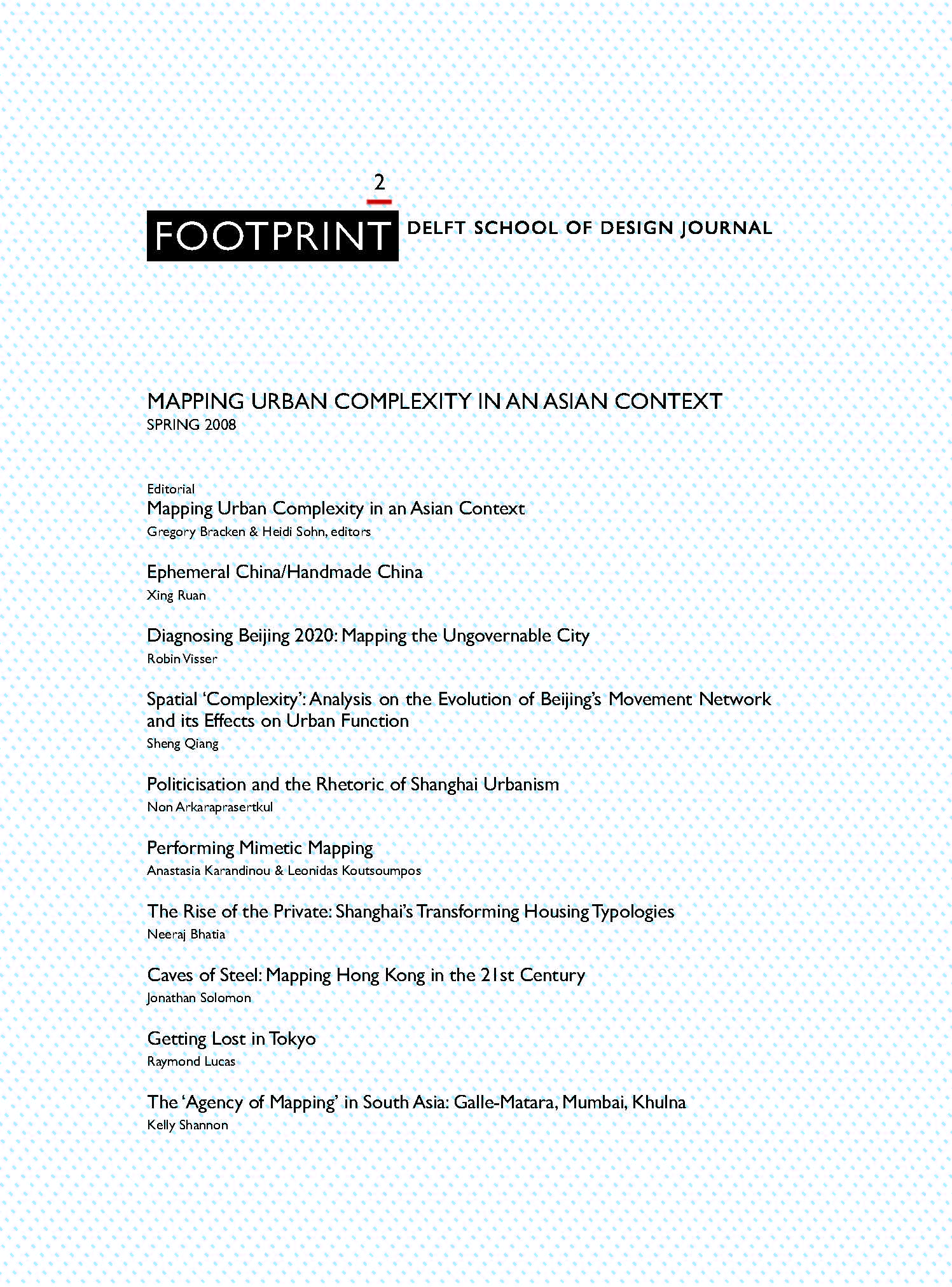The ‘Agency of Mapping’ in South Asia: Galle-Matara (Sri Lanka), Mumbai (India) and Khulna (Bangladesh)
DOI:
https://doi.org/10.7480/footprint.2.1.681Abstract
The territories – cities and landscapes – of South Asia are under incredible transformation due to man-made and natural conditions. Globalisation is spatially leaving its imprint as cities and landscapes are progressively being built by an ever-more fragmented, piecemeal and ad-hoc project modus – funded by established and new-found fortunes of national and international developers and lenders, development aid projects and (often corrupt) governments. At the same time, ‘natural’ disasters are increasing in severity and frequency – due to climate change and the flagrant disregard of the environment in the relentless dive to impose imported terms of reference for modernisation and urbanisation. The challenges and strategic importance of realising urban design in South Asia’s contemporary context of borrowed visions, abstract land-use planning and a diminishing political will are, obviously, innumerable. How to qualitatively intervene as an urbanist in such a context? This paper will argue that an understanding of contexts, based on fieldwork, is necessary in order to project feasible urban visions and strategic urban design projects that can make more evident particular sites’ inherent qualities and creatively marry ecological, infrastructural, and urbanisation issues by solutions that cut across multiple scales and sectoral divisions. Interpretative mapping is a first step to transform a territory. An understanding of the context and the reading of sites are necessary in order to create modifications that have logic and relate to the particularities of places and situations. Three scales of mapping (territorial, urban, and tissue) will be presented. The territories/cities investigated are the southwest (Galle-Matara) coast of Sri Lanka, Mumbai, the economic engine of India, and Khulna, the third largest city in Bangladesh.
Downloads
Published
Issue
Section
License
- Authors retain copyright and grant the journal right of first publication with the work simultaneously licensed under a Creative Commons Attribution License that allows others to share the work with an acknowledgement of the work's authorship and initial publication in this journal.
- Authors are able to enter into separate, additional contractual arrangements for the non-exclusive distribution of the journal's published version of the work (e.g., post it to an institutional repository or publish it in a book), with an acknowledgement of its initial publication in this journal.





